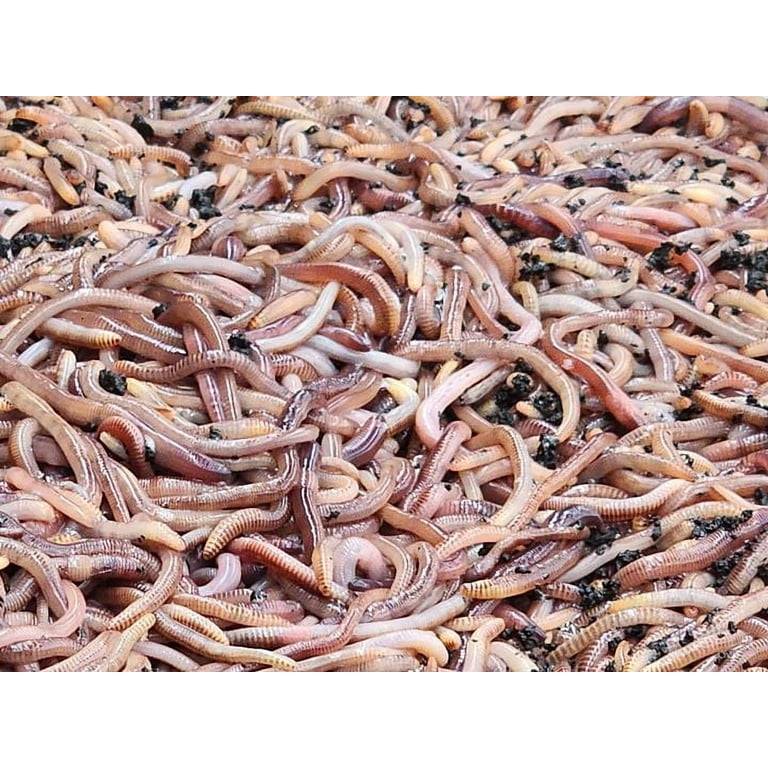Everything You Need to Learn About Red Wigglers for Composting
Red wigglers, or Eisenia fetida, play a critical function in the world of composting, changing natural waste into useful soil amendments. The process of setting up a worm bin and keeping it can posture challenges.
What Are Red Wigglers?

(Worm Farms Near Me)
Native to North America, red wigglers are surface-dwelling microorganisms that like damp, cozy environments rich in decomposing raw material. Their diet is composed primarily of decomposing plant product, food scraps, and other organic debris, which they take in and damage down effectively. As they digest this material, they produce nutrient-rich spreadings that boost soil fertility.
Red wigglers are hermaphroditic, having both male and women reproductive body organs, and can recreate quickly under optimum problems. This capability makes them a perfect choice for composting systems, as their population can increase swiftly. Their durability and adaptability to numerous atmospheres further strengthen their significance in lasting waste administration techniques. Overall, red wigglers are important contributors to the procedure of reusing natural waste right into important garden compost.
Benefits of Utilizing Red Wigglers
Making use of red wigglers in composting systems provides numerous benefits that improve both the efficiency of waste administration and the high quality of the resulting garden compost. These worms, scientifically recognized as Eisenia fetida, are specifically effective at breaking down natural issue, turning cooking area scraps and backyard waste into nutrient-rich compost at a sped up price.
Among the primary advantages of utilizing red wigglers is their capacity to take in large amounts of organic product, commonly refining their weight in food waste daily. This high usage rate causes quicker disintegration and reduces the quantity of waste sent out to land fills. In addition, the castings generated by red wigglers are abundant in vital nutrients, beneficial bacteria, and enzymes, making them an outstanding plant food for gardens and plants.
In addition, red wigglers flourish in a variety of environments, making them versatile for both interior and outdoor composting systems - red wigglers. Their existence in a garden compost bin aids to aerate the product, protecting against odors and advertising a healthy composting procedure. Overall, utilizing red wigglers not just contributes to effective waste monitoring however likewise sustains sustainable horticulture methods with the manufacturing of top quality garden compost
(red worms)
Establishing Up Your Worm Container
To effectively establish a worm container, it is essential to select an appropriate container that fulfills the requirements of red wigglers while providing a favorable atmosphere for composting. A suitable bin can be made from plastic, timber, or metal, with a capability of a minimum of 1 square foot for each extra pound of worms.
Make certain the container has appropriate water drainage openings to stop excess wetness, as red wigglers grow in a moist, but not waterlogged, setting. red wigglers. The container must additionally be ventilated to offer adequate air movement, avoiding anaerobic conditions that can damage the worms
A perfect area for the worm container is a trendy, dark area, totally free from direct sunshine and severe temperature levels, as red wigglers choose a temperature range of 55 to 77 degrees Fahrenheit.
Before presenting the worms, prepare bedding products such as shredded paper, cardboard, or coconut coir, which will give both environment and food. Dampen the bed linens lightly to create an inviting setting for the worms. Finally, take into consideration putting a lid on the bin to preserve humidity and lower insects, while guaranteeing it can be quickly removed for upkeep.
Feeding and Treatment Guidelines
Feeding red wigglers is a vital aspect of keeping a healthy composting system. These worms thrive on a varied diet regimen, primarily composed of natural materials such as fruit and vegetable scraps, coffee grounds, and crushed eggshells. read review It is vital to prevent feeding them meat, dairy, and oily foods, as these can produce undesirable odors and bring in parasites.
When introducing food to your worm container, chop or shred products right into smaller sized pieces to facilitate quicker disintegration. Begin with percentages to evaluate the worms' consumption price, progressively increasing the amount as they adapt. It is suggested to alternating feeding locations within the bin to encourage detailed blending and oygenation of the compost.

Troubleshooting Common Issues
Keeping a flourishing worm composting system can occasionally offer difficulties that call for interest and troubleshooting. Typical issues consist of an unpleasant odor, which commonly suggests overfeeding or the presence of anaerobic conditions. To fix this, minimize the quantity of food included and make certain correct aeration by blending the bed linen product.
An additional constant trouble is the escape of worms from the bin. This can occur as a result of extreme wetness or inappropriate environmental problems. Regularly check the wetness levels, going for a moist but not soaked consistency, and maintain optimal temperatures between 60-80 ° F(15-27 ° C )to develop a comfortable environment for your red wigglers.
Bugs, such as fruit flies, can additionally attack worm bins. red wigglers. To battle this, cover food scraps with a layer of bed linen or shredded paper to hinder flies from laying eggs. In addition, ensure that any type of food added is fresh and devoid of mold and mildew, which can draw in undesirable parasites
Last but not least, if your worms appear inactive, check for tension elements such as temperature fluctuations or insufficient wetness. Addressing these typical problems will assist preserve a healthy and balanced and efficient worm composting system.
Conclusion
In recap, red wigglers, or Eisenia fetida, play an important duty in lasting waste monitoring with vermicomposting. Their capacity to effectively transform natural waste into nutrient-dense castings boosts dirt wellness and promotes plant development. Appropriate configuration and upkeep of a worm bin, along with adherence to feeding guidelines, ensure a growing ecosystem that decreases garbage dump payments. Dealing with common issues promptly better supports the performance of this environmental technique, adding to ecological sustainability and agricultural efficiency.